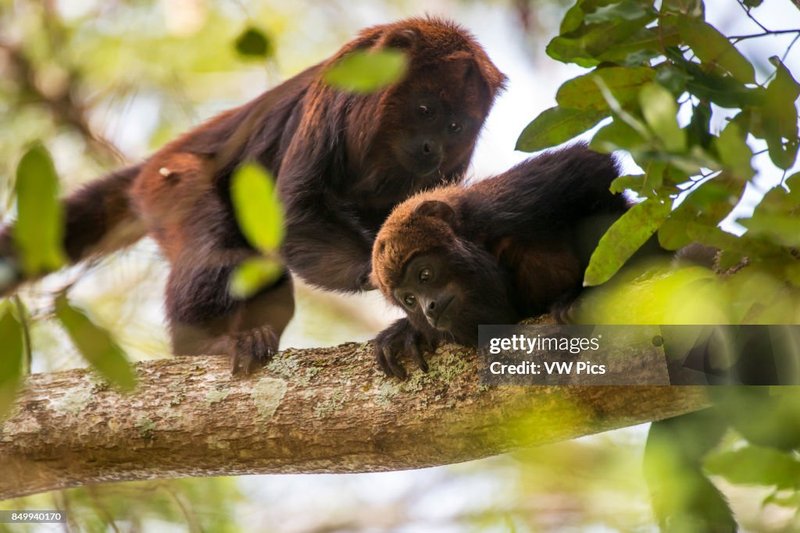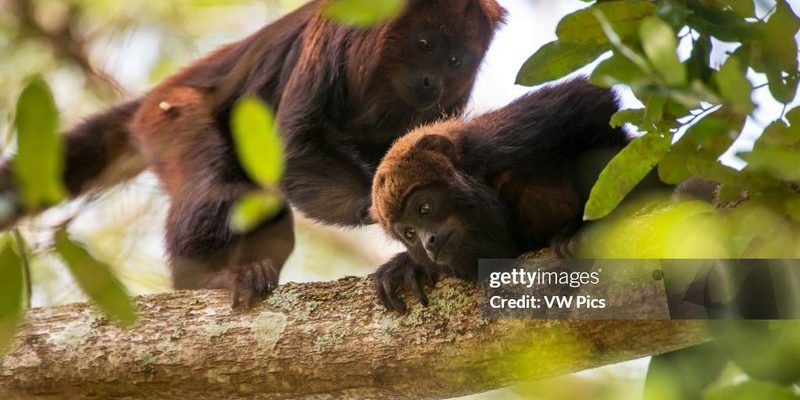
Imagine you’re seated at a coffee shop, and you overhear a conversation about howler monkeys. You might be surprised to learn that these monkeys are more than just cute faces with loud voices. They’re essential players in their environment, helping to shape the forest in ways that might not be immediately obvious. So, let’s dive into the various roles the Guariba plays in its ecosystem and why it’s so vital to the health of the jungle.
What Makes the Guariba Unique?
The Guariba is instantly recognizable thanks to its long, prehensile tail and distinctive howling calls. These monkeys are typically found in the rainforests of Central and South America, particularly in Brazil. An interesting fact is that their howling can be heard from up to three miles away! But, aside from their impressive vocal abilities, there’s so much more to these monkeys.
Guaribas are primarily arboreal, which means they spend most of their time in trees. They have a unique diet that mainly consists of leaves, fruits, and flowers. This diet isn’t just important for their survival; it also plays a significant role in the ecosystem. By feeding on various plants, they help with pollination and seed dispersal, which keeps the forest flourishing. You might say they’re like the gardeners of the jungle!
Their social structure is another fascinating aspect. Living in groups known as troops, Guaribas have complex relationships and hierarchies. This social behavior not only helps them stay safe from predators but also ensures that they can work together to find food and care for their young.
The Guariba’s Role in Seed Dispersal
One of the most critical functions of the Guariba in its ecosystem is seed dispersal. When these monkeys consume fruits, they often don’t digest the seeds. Instead, they pass them in their droppings, which then gets scattered throughout the forest. This process is vital for several reasons:
- Forest Regeneration: By spreading seeds, Guaribas promote the growth of new plants. This diversity is essential for a healthy ecosystem.
- Habitat Creation: The plants that grow from dispersed seeds provide habitats for various animals, contributing to the overall biodiversity of the rainforest.
- Food Source: As those new plants grow, they also provide food for other creatures, completing the cycle of life.
So, next time you see a Guariba munching on a juicy fruit, remember it’s not just snacking—it’s helping to shape the future of the forest!
The Role of the Guariba in Pollination
While Guaribas are primarily known for their seed dispersal abilities, they also play a role in pollination. As they feed on flowers, they inadvertently transfer pollen from one bloom to another. This is crucial for many plants in the rainforest, allowing them to produce fruit and, in turn, supporting a diverse array of wildlife.
Think about it: When Guaribas visit a flowering plant, they’re engaging in a mutual relationship. The plant gets pollinated, while the monkey benefits from the nutritious flowers. It’s a classic example of *nature’s teamwork*. Without these interactions, many plants wouldn’t thrive, which could lead to a decline in food sources for countless other animals.
Predators and Prey: The Guariba’s Place in the Food Chain
In the ecosystem, the Guariba is both a predator and prey. While they mostly eat leaves and fruits, they can occasionally munch on insects. However, they are also targeted by various predators, including large birds of prey and big cats like jaguars.
This predator-prey dynamic is vital for maintaining balance in the ecosystem. When predators keep Guariba populations in check, it prevents overpopulation, which could lead to resource depletion. Conversely, a healthy Guariba population supports a variety of predators, creating a well-rounded food chain.
For the Guariba, it’s all about survival, and they’ve adapted well to their environment, developing social behaviors and vocalizations to alert each other of danger. Their howls serve as a warning system, helping the troop stay safe from potential threats.
Threats Facing the Guariba and Their Ecosystem
Despite their importance in the ecosystem, Guaribas face numerous threats that could jeopardize their survival. Habitat destruction is a significant issue, driven largely by deforestation for agriculture and urban development. As their rainforest homes shrink, so too does their ability to fulfill their ecological roles.
Additionally, climate change poses a looming threat. Changes in temperature and rainfall patterns can disrupt food sources and force Guaribas to adapt or migrate, which isn’t always possible due to fragmented habitats. The loss of genetic diversity is another concern; smaller populations become increasingly vulnerable to disease and other threats.
It’s crucial to recognize these challenges if we want to help protect not just the Guariba but also the entire ecosystem that relies on their presence. Organizations focused on conservation efforts are working to raise awareness and protect these vital animals and their habitats.
The Importance of Conservation Efforts
Preserving Guaribas and their habitats is essential for maintaining the delicate balance of the rainforest ecosystem. Conservation efforts aim to protect these monkeys through various methods, including habitat restoration, anti-poaching initiatives, and education programs for local communities.
By engaging with local populations, conservationists can foster a deeper understanding of the Guariba’s role in the ecosystem. When people recognize the importance of these monkeys, they’re more likely to support efforts to preserve their habitats and create sustainable practices that benefit both wildlife and humans.
Moreover, supporting ecotourism can provide economic opportunities for local communities, encouraging them to value and protect their natural resources rather than exploit them. It’s a win-win situation that can lead to long-term benefits for both the Guariba and the environment.
Wrapping Up: The Guariba’s Vital Role in Ecosystems
So, there you have it—the Guariba, or howler monkey, is much more than a loud voice in the jungle. These monkeys are fundamental to the health of their ecosystems, acting as pollinators, seed dispersers, and even as part of the food chain. Their presence ensures that the rainforest thrives, supporting countless species along the way.
If we want to keep the rainforest vibrant and full of life, protecting the Guariba is crucial. By raising awareness, supporting conservation efforts, and understanding the interconnectedness of all life within the ecosystem, we can help preserve these remarkable creatures for future generations. Remember, every howl you hear is a reminder of the intricate tapestry of life that needs our protection.

